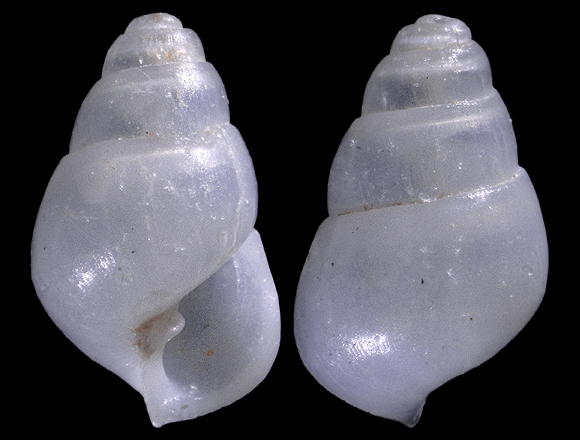(MacGillivray, 1843)
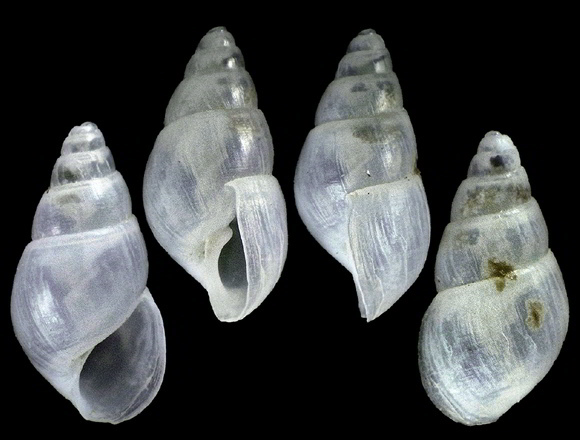
Basionym: Odostomia scalaris. Synonym: rissoides.
In tide pool, Aphrodite, Leucate, Occitania, S. France. 3,3mm.
Original pictures provided by S. Clanzig (FR).
– (CC BY-NC-SA) –
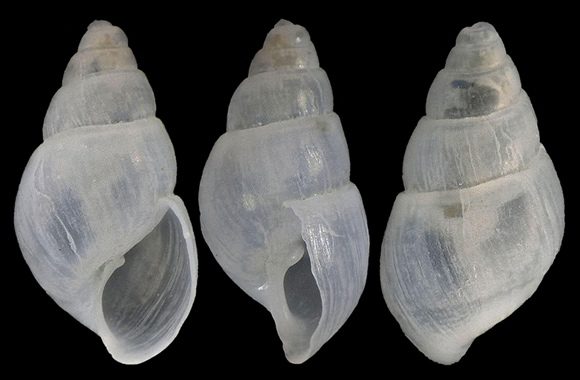
The animal is used to feeding near the lips of the Mussels Mytilus edulis. It is not uncommon to discover three or more of these snails gathered near the incurrent siphon, proboscis extended inside the mussel. – Same spot. 3mm.
Original pictures provided by S. Clanzig (FR).
– (CC BY-NC-SA) –
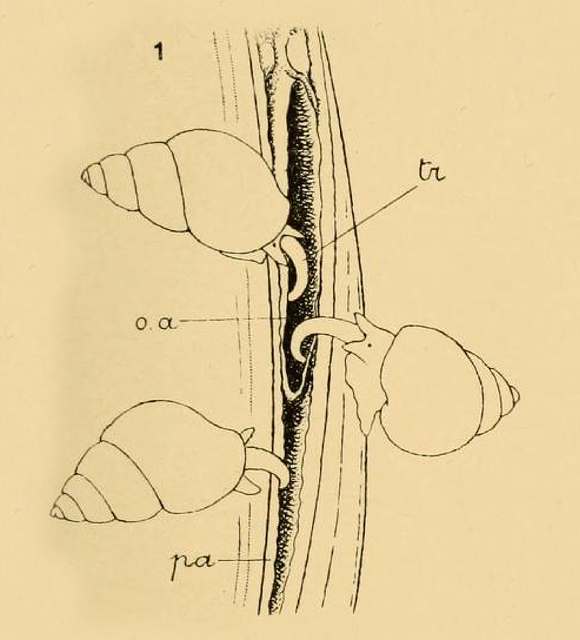
« Odostomia rissoides: its habitat is exclusively in the old and resistant byssus of adult Mussels (alive) fixed in the crevices of the rocks […] These small Gastropods are rather securely retained to their support by a thin mucous filament that secretes the posterior terminal gland of their foot. One knows that Odostomia are aglossal Gastropods, that is to say, deprived of radula, but provided with a long sucking proboscis… » – P. Pelseneer: op. cit. p.3.
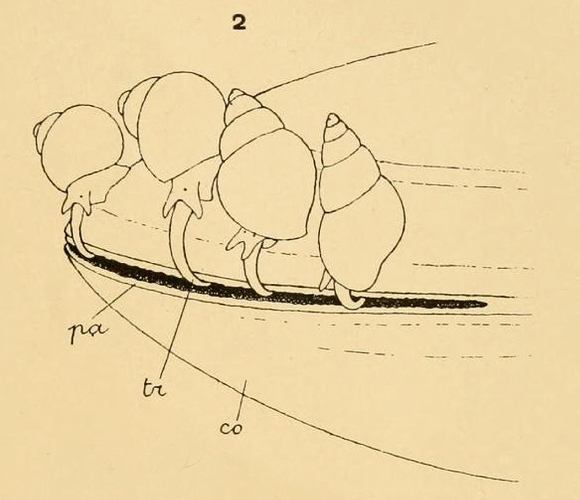
« Generally, it is in the vicinity of the pallial suture (in front of the anal orifice of the mantle) that the proboscis is plunged, either in the interior of this pallial orifice itself, or in front (frequently), in the middle of the arborizations of the edge of the coat, still behind [pictured above]. The two valves are often too close to distinguish the precise point where the trunk is fixed; in some cases, it is inside the pallial cavity, on the inside of the mantle, at other times it is on the outside of the mantle edge, protruding between the valves. Always, it is attached strongly. » – Ibid.
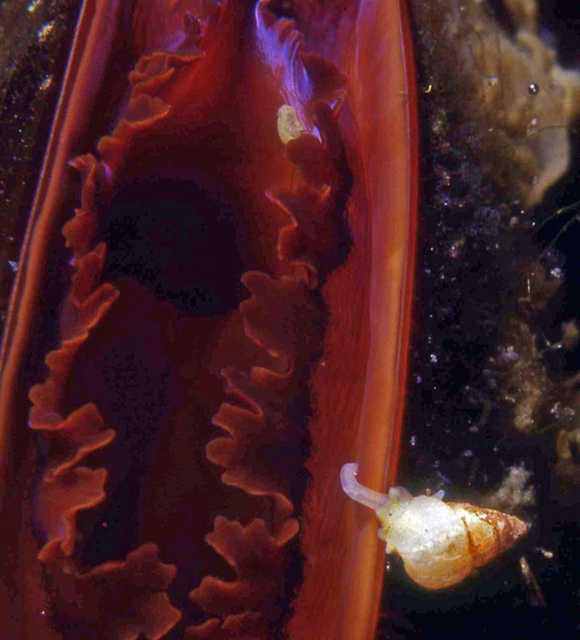
« Given his diet, Brachystomia scalaris has no radula! Its mouth bulb is transformed into a pump that serves to suck the hemolymph from the mussel; the radula and jaws were forgotten for uselessness during evolution. The only question that persists (for me) is the lack of reaction of the mussel: anesthesia by the predator? Alone or in a small group, [scalaris] waits on the edge of the valves if they are closed that the mussel goes into active filtration phase, then it deploys a long trunk that penetrates into the edge of the mantle, yet equipped on the periphery of the inhalant siphon with sensitive lobed papillae, without reaction of the mussel. »
Original picture and comment provided by G. Breton (FR) for lenaturaliste.net – (CC BY-NC-SA).
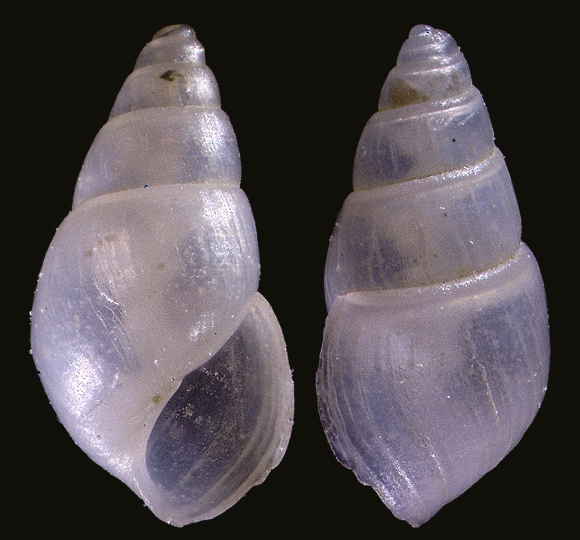
The columellar plait is not often visible, or strong.
Anse de la Couronne Vieille, La Couronne, south of Martigues, Provence, S. France. 3,3mm. E. Vial legit (FR).
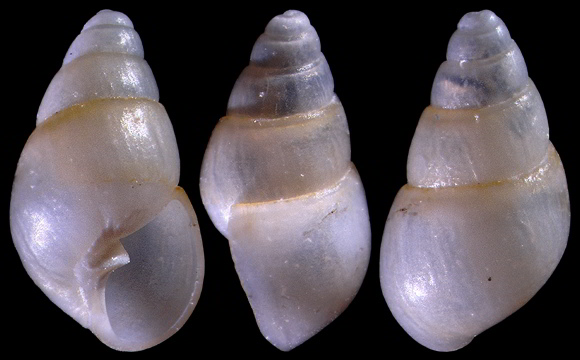
« Shell ovato-conical, of five thin, transparent, glossy, faintly striated, moderately convex turns, which are distinctly separated by the spirato-canaliculate suture, toward which the upper margin is suddenly inflexed ; the mouth ovate, nearly half the whole length, with the peristome thin, the columellar lip rather inflexed, and terminating in a prominent plait on the columella ; no umbilicus ; the colour hyaline-white. […] This species differs from all the others in having the pillar-lip inflexed, in wanting the umbilicus, and in the subscalar form of its spire. » – w. MacGillivray: A history of the molluscous animals of the counties of Aberdeen, Kincardine and Banff, London 1843, p.154.
Big toothed specimen from beach drift, Le Grau-du-Roi, Gard, S. France. 2,7mm.
